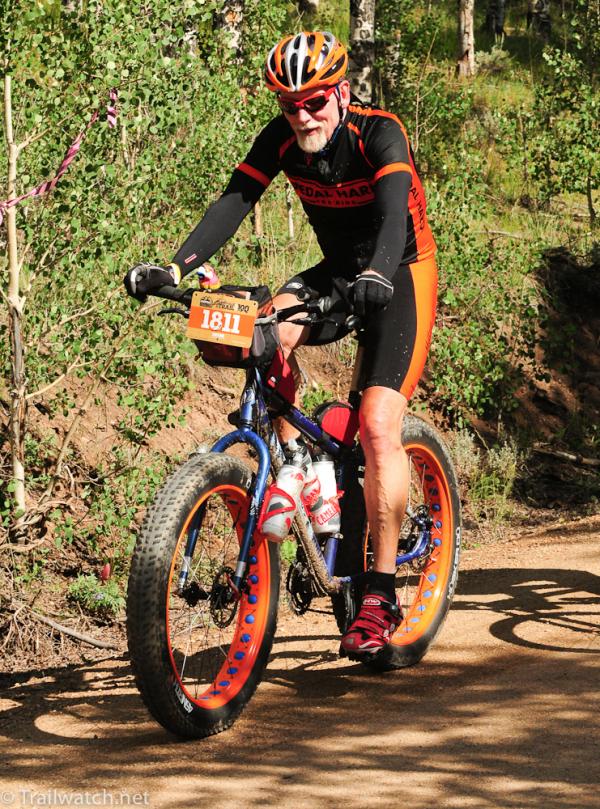IMBA shares Fat Bike best practices
Snow biking a new option for many Fat Bikers

With the rise of Fat Bikes, or mountain bikes specially designed to accommodate very fat tires for off-road use, more cyclists are venturing out on trails, especially snow covered trails for both rides and races. Like skiing, some Fat Bikers travel on groomed trails at ski resorts while others go into the backcountry. Hence, the International Mountain Bike Association (IMBA) has released "Fat Bike Best Practices" to help riders in the growing cycling discipline share and enjoy the trails.
For riding on snow, IMBA recommends bikes with tires wider than 3.7 inches with less than 10psi of pressure. Fat Bikes should not leave a rut deeper than one inch in snow and Fat Bikers should have land manager permission before riding on any trails.
The best practices for riding on Nordic trails, snowmobile trails and in the backcountry are listed below.
Best practices for riding on Nordic trails
- Only ride at ski areas that allow and encourage biking.
- Yield to all other users when riding. Skiers don't have brakes but you do!
- Ride on the firmest part of the track.
Get The Leadout Newsletter
The latest race content, interviews, features, reviews and expert buying guides, direct to your inbox!
- Do not ride on or in the classic tracks.
- Leave room for skiers to pass (don't ride side-by-side with all of your buddies blocking
the full trail).
- Allow the track time to set up after grooming and before riding.
- Beware of alternative days for bikes and for skiers.
- Only ride a purpose-built fat bike, not any old mountain bike. Tire tread must be wider
than 3.7 inches.
- Be an ambassador for the sport: stay polite, educate other riders, discourage bad behavior and follow the rules.
- Help out and get involved by joining your local Nordic club.
- Donate money for trail grooming.
Best practices for riding on snowmobile trails
- When riding on snowmobile trails, use a front white blinker and rear red blinker at all times. Wear reflective material on both the front and rear of your body.
- Stay to the far right of the trail and yield to snowmobiles.
- Know and obey the rules of your local land manager. Understand that some trails may be on private property and might not be open to alternative uses.
- Be prepared. Winter travel in the backcountry requires carrying proper gear and dressing properly. Be self-sufficient!
- Use extreme caution when riding at night. Be visible and always use lights.
- Be friendly! Fat bikers are the newest users and the snowmobilers you encounter might not be welcoming. Be courteous and open to suggestions.
- Help out by supporting your local snowmobile club.
- Donate to trail grooming and maintenance efforts.
Best practices for riding on natural terrain and in the backcountry
In the right conditions, a fat bike can be the ultimate winter backcountry travel tool. Frozen conditions and minimal snow coverage (1-5 inches) means access to areas that are impassible during the warmer months. But just because you can ride somewhere doesn't mean you should. Be aware and be prepared.
- Do not trespass! Know whether or not you are on private property. Obey ALL land manager rules. Some land parcels are closed to bikes whether you are riding on a trail or not.
- Do not ride through sensitive wildlife habitats. This may be especially important on beaches or in places where animals hibernate. Learn about the area you want to ride in before you ride there.
- Do not disturb wildlife. Many species survive on minimal diets during winter. Stressors or the need to move quickly can deplete their energy stores.
- Learn safe ice travel. Riding on frozen water can be extremely dangerous. Is the ice thick enough to support you? Take ice fishing picks and a length of rope when riding on lakes and rivers.
- Understand changing conditions. New snowfall or warming temperatures can make the return trip much more difficult. Tire tracks can be covered, hard snow can turn to slush, rivers can start to melt. Always know the forecast and be aware of how changing conditions might alter the safe passage of your route.
- Be prepared. Carry provisions in case you have to stay out longer than planned.
- Let people know. Make sure someone else knows where you are going, when you left and when you expect to return.
- Learn to share. Be aware that your tracks might attract other riders. Understand that "your" route might not remain a secret for long.